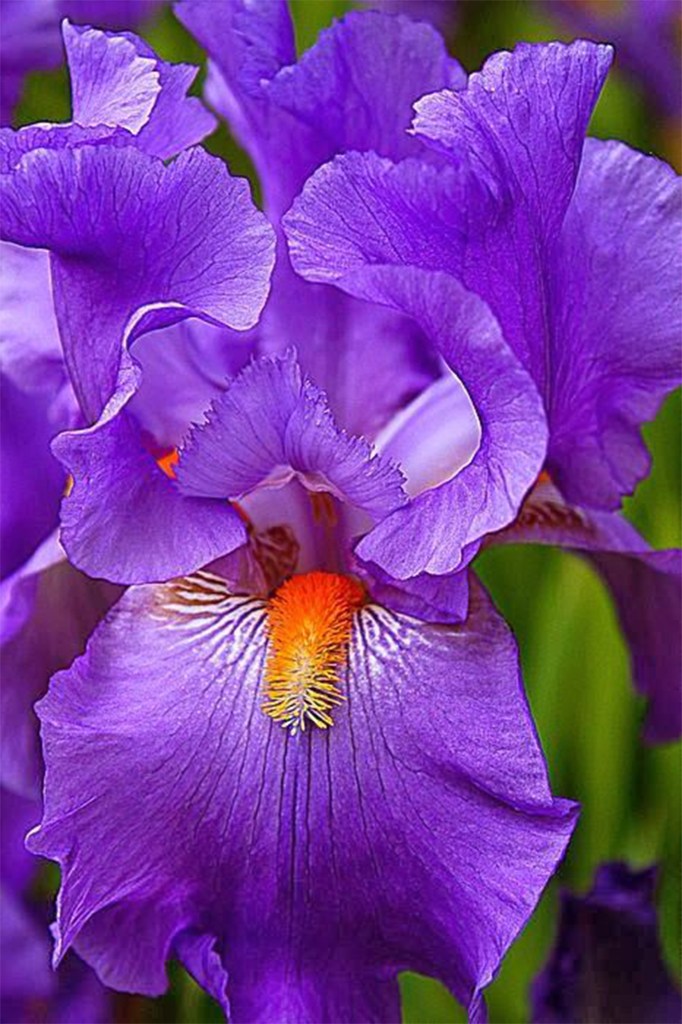ONE GARDENER TO ANOTHER: Late summer the ideal time to plant irises
Published 6:45 am Monday, August 28, 2017

- Irises
When I lived in Georgia, the previous owners of my home planted iris across the entire back of the house. Half of them were a deep, rich purple and the other half white.
When they were all in bloom, it was magnificent. When we moved, we kept the house and rented it out.
Trending
Our first tenant said she loved the gardens and she would take good care of them. She did a wonderful job, except that apparently, she didn’t like iris. She dug up every single plant.
Luckily, my mother-in-law, who loved the iris, had transplanted a few of them from my garden to hers in South Alabama. I am fortunate enough to have a mother-in-law who is also a master gardener. A really good one, at that. She split the plants and gifted me a big pot full of my traveling iris.
I am still deciding on the layout of my garden, so I have been caring for them in the pot on my patio.
They are still alive, which is proof enough of the hardiness of this plant.
Late summer is the ideal time to transplant these beauties. This gives the iris a chance to establish its roots while there is still enough sunlight to coax its growth so that it can survive the winter.
Pick a spot with 6 to 8 hours of full sun per day. They can do well in constant sun, however, will do best if planted where the sun hits in the late afternoon or gets lots of morning sun but receives the shade of a tree in late afternoon.
Trending
Iris like a slightly acidic soil, a pH of about 6.8 to 7.0, with good drainage. Iris do not like wet feet which leave them susceptible to root rot if over-watered. For heavy, clay-rich soil, add humus or organic matter, or plant on a slope or raised flower bed that can help with drainage.
The rhizome, the brown, root-like structure that resembles a potato, prefers to be slightly exposed to air, so they should not be planted deep. The roots should be arranged so they spread downward beneath the rhizome. Plants should be spaced at least a foot apart.
Give the iris a thorough watering after planting. If it is particularly dry and hot, iris can be watered every 7 to 10 days, as needed. You can stop watering when the weather turns cool.
Snowfall will insulate the ground, however, we can’t always be guaranteed snow in our corner of the world. Iris will benefit in winter from a thin layer of mulch to protect the ground and prevent heaving. Heaving is the process of the ground freezing and melting repeatedly causing the soil to contract and then expand, lifting the rhizomes up and eventually exposing the roots. Mulch should be removed after the last frost.
In spring, irises benefit from a light application of fertilizer. You don’t want a fertilizer high in nitrogen that will cause excessive leaf growth, but one that has a higher percentage of phosphorus that promotes bloom and root growth. Use a general purpose 5-10-10 fertilizer (5 percent nitrogen, 10 percent phosphorus, 10 percent potassium). Apply fertilizer approximately 6-inches from the rhizome to prevent fertilizer burn.
Iris are perennial flowers that will spread from the roots. After a few growing seasons, it may become necessary to divide the iris to avoid overcrowding, forcing them to compete for water and nutrients. Make sure to share your divided irises. There may be someone missing having them.
Until next week, happy gardening.
— Irland, a member of the Limestone County Master Gardeners, can be reached at kippirland@hotmail.com. For more information on the Limestone County Master Gardeners, visit http://mg.aces.edu/limestone.






